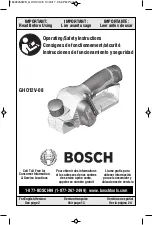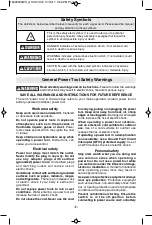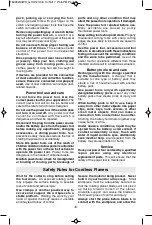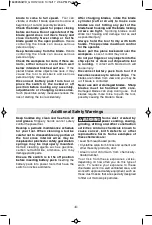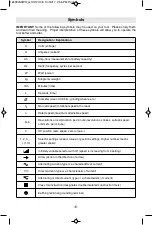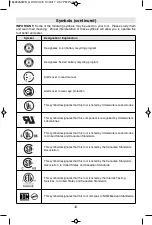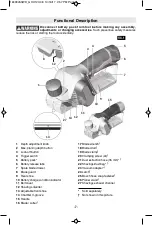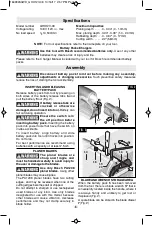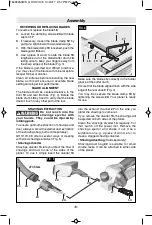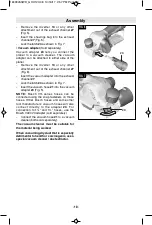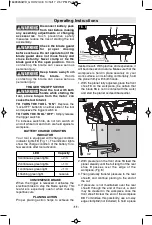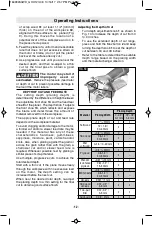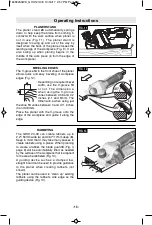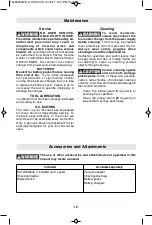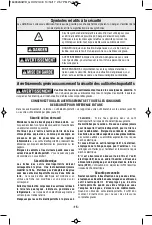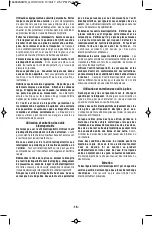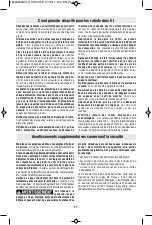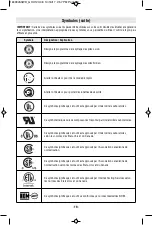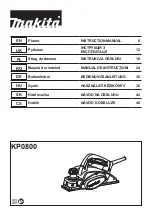
-4-
Additional Safety Warnings
Keep handles dry, clean and free from oil
and grease.
Slippery hands cannot safely
control the power tool.
Develop a periodic maintenance schedule
for your tool. When cleaning a tool be
careful not to disassemble any portion of
the tool since internal wires may be
misplaced or pinched or safety guard return
springs may be improperly mounted.
Certain cleaning agents such as gasoline,
carbon tetrachloride, ammonia, etc. may
damage plastic parts.
Ensure the switch is in the off position
before inserting battery pack.
Inserting the
battery pack into power tools that have the
switch on invites accidents.
Some dust created by
power sanding, sawing,
grinding, drilling, and other construction
activities contains chemicals known to
cause cancer, birth defects or other
reproductive harm. Some examples of
these chemicals are:
• Lead from lead-based paints,
• Crystalline silica from bricks and cement and
other masonry products, and
• Arsenic and chromium from chemically-
treated lumber.
Your risk from these exposures varies,
depending on how often you do this type of
work. To reduce your exposure to these
chemicals: work in a well ventilated area, and
work with approved safety equipment, such as
those dust masks that are specially designed
to filter out microscopic particles.
blade to come to full speed.
Tool can
vibrate or chatter if blade speed is too slow at
beginning of cut and possibly kickback.
Check the blade guard for proper closing
before each use. Do not operate tool if the
blade guard does not move freely and
close instantly. Never clamp or tie the
blade guard in the open position.
Hands
contacting the blade can cause serious
personal injury.
Keep hands away from the blade.
Hands
contacting the blade can cause serious
personal injury.
Check the workpiece for nails, if there are
nails, either remove or set them well
below intended finished surface.
If the
planer blades strike objects like nails it may
cause the tool to kickback and serious
personal injury may result.
Disconnect battery pack from tool or
place the switch in the locked or off
position before making any assembly,
adjustments or changing accessories.
Such preventive safety measures reduce the
risk of starting the tool accidentally.
After changing blades, rotate the blade
cylinder (cutter drum) to make sure
blades are not hitting any part of the
blade head housing and the blade locking
screws are tight.
Spinning blades could
strike tool housing and damage tool as well
as possible injury.
Always hold the tool firmly with both
hands. This provides maximum control
for the operator.
Never pull the plane backward over the
workpiece.
Loss of control may occur.
Do not put fingers or any objects into the
chip ejector or clean out chips while tool
is running.
Contact with blade drum will
cause injury.
Disconnect battery pack from tool if it
becomes necessary to remove chips.
The
blades are hidden from view and you may be
cut if blade is contacted.
Never use dull or damaged blades. Sharp
blades must be handled with care.
Damaged blades can snap during use. Dull
blades require more force to push the tool,
possibly causing the blade to break.
160992A3WD_GHO12V-08 10/16/17 2:56 PM Page 4

